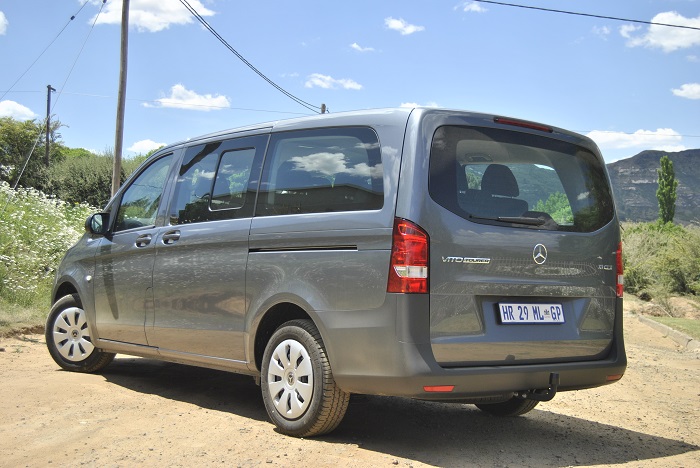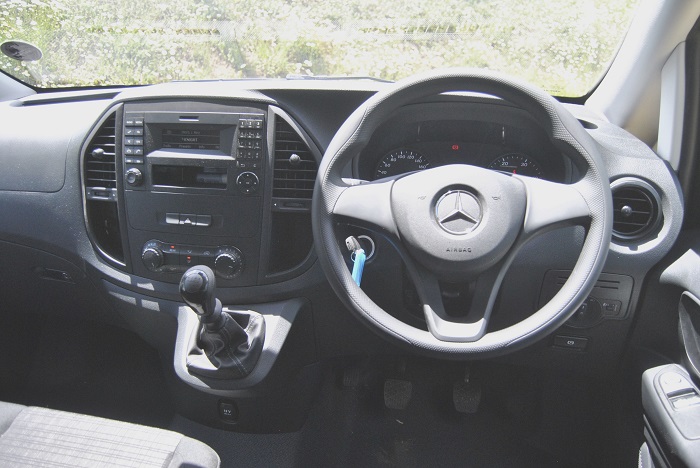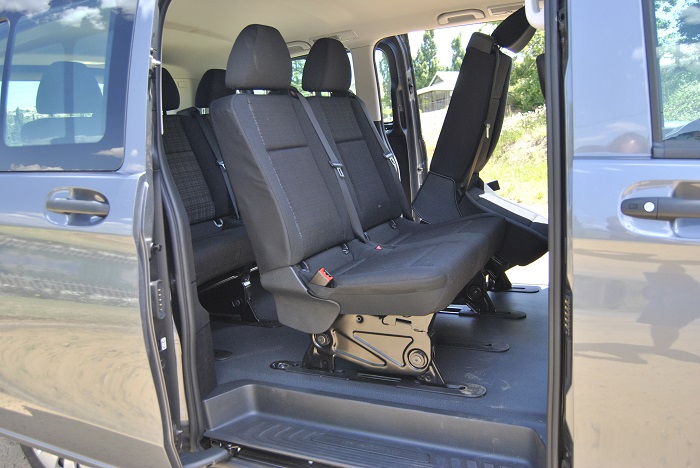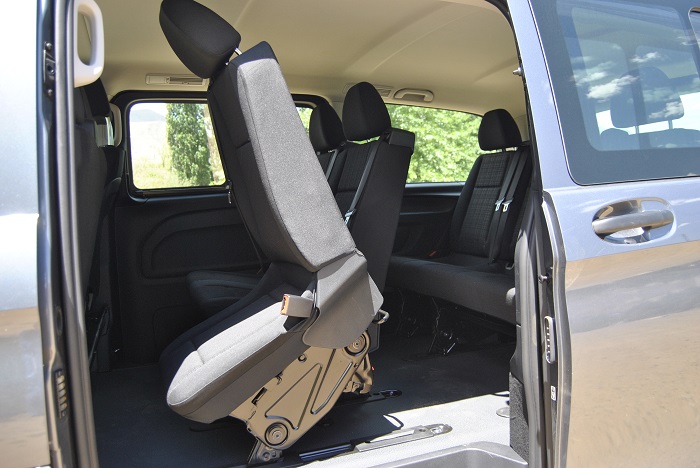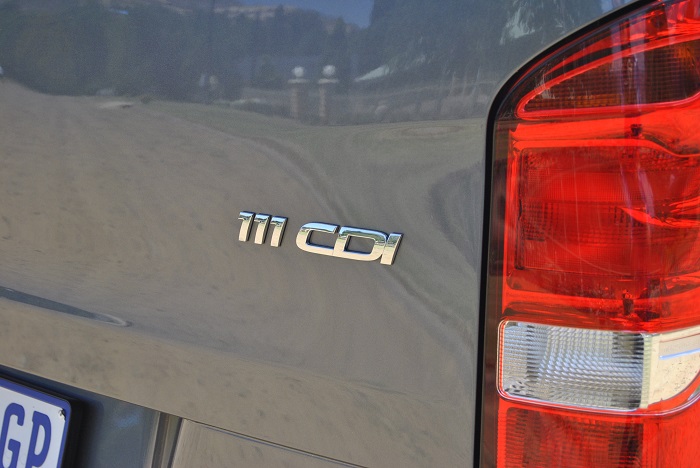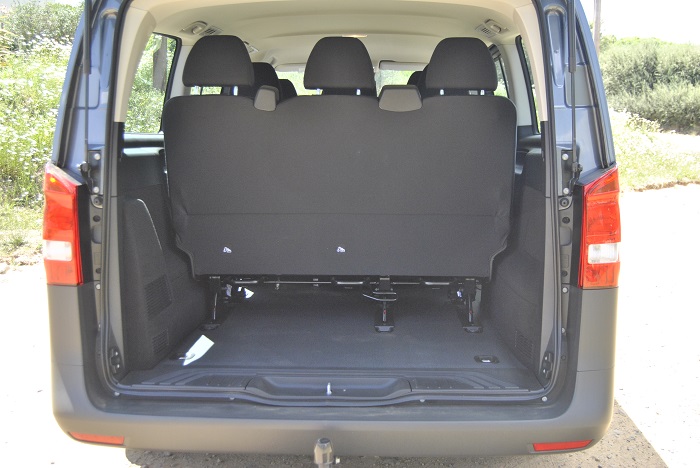From the huge Volkswagen Crafter cargo van, to the comparatively small but all-encompassing Hyundai H-1, both proved that the van could be more than a match for a traditional pick-up or big crossover, in spite of not enjoying the same levels of success locally as in Europe.
An icon with the badge that counts
An all-rounder in both the cargo and passenger van segments, the Mercedes-Benz Vito has recent years become the closet opponent to the iconic Volkswagen T6, whilst at the same time having to fend off the likes of the H-1 and to a lesser degree, the Ford Transit Custom and is Tourneo passenger offshoot.
While the three-pointed star somewhat disappointingly refuses to release individual model’s sales, the popularity of the Vito relative to the T6 cannot be ignored given the number of examples on our roads, especially more so as both were released into the local market three years ago.
Having carved out a reputation as the preferred hotel and airport shuttle in passenger guise, the recent arrival of the Vito was admittedly met with some hesitation, as the model in question turned out to be the very entry-level Tourer Pro 111 CDI.
A good-looking base van?
Viewed on first glance, the cheapest Vito’s lack of body coloured bumpers, door handles and mirrors, a plastic grille and wheel caps for the rather small 16-inch tyres compared to its more upmarket siblings hardly rates as its biggest shortcoming. In fact, a certain amount of classiness still prevails with a more understated look compared to the “in-your-face” H-1 and the inherently sportier looking T6.
Workman-like interior puts function first
Tug open the front door, it quickly becomes evident that the 111 is aimed at being more of a workhorse than a van with luxury sedan aspirations like the T6 Caravelle and V-class. Dominated by hard yet durable plastics, the interior looks positively dated by modern standards due to the LCD audio display with its plethora of buttons, bare urethane steering wheel, cloth seats and analogue instrument cluster.
That being said, the audio does come with Bluetooth, USB and Aux input, along with a very powerful air-conditioning system, while the high driving position is further abetted by the dash mounted gear lever that falls easy to hand, again signifying that the 111 is all about function rather than style.
An annoyance however is the plastic lever for the handbrake mounted towards the bottom of the facia on the right hand side, that, when pulled, releases the outdated foot brake with a rather unpleasant thud that initially rated as somewhat unnerving.
With seating for nine, the Vito cannot be faulted for space either, especially at the rear, where the 3+3 seating layout provides adequate support and comes with their own respective seatbelts, with a further boon being the air-conditioning vents mounted in on the sides.
Although entry is aided by dual-sliding doors, access to the third row can only be achieved by tilting the single seat forward, with none being able to fold completely flat. However, releasing the pins at the bottom of chairs does allow for them to be removed completely, making an already large boot even humongous.
Engine misses the mark
During the Vito’s stay, it had to face one of this writer’s now obligatory weekend road trips into the Free State, where it’s biggest flaw become obvious. Nestled underneath its tapering bonnet, the 111’s derives motivation from a 1.6-litre turbodiesel engine sourced from Renault, which provides a measly 84kW/270Nm.
Tasked with hauling nearly two tonnes of van along, the engine feels weak in the cut-and-thrust of everyday traffic, not helped by dollops of low-down turbo-lag. Out on the open road, the four-pot emits a typical diesel clatter with overtakes having to be judged carefully. This will likely get even worse with all nine seats accounted for, meaning that plenty of rowing from the slick six-speed manual gearbox will be needed in order to keep the speed up.
Tricky to park but with a comfy ride
Measuring a smidge under five metres in overall length, manoeuvring the Vito proved to be challenge at times given the lack of any aids such as parking sensors or a reverse camera, though the steering is relatively light if devoid of feel.
Traversing the often badly surfaced Free State roads was a different story, as the soft suspension made for a comfortable and relaxing ride, while extensive use of the air-conditioning in the blazing central South African heat and during the daily commute, saw fuel consumption, after seven days and well over 1 000km, top out at 7.0-litres/100km.
Conclusion
As a basic transporter with no frills and space as its top priority, the entry-level Mercedes-Benz Vito undoubtedly succeeds even it at the rather eye-watering price tag of R618 470 before options. However, the less than suitable engine with is meagre outputs remains a worry and will more than likely result in many opting for the more powerful 114 CDI, which at R647 603, makes the Vito appear overpriced compared to the H-1 that offers more power, features and an automatic gearbox as standard for R7 703 less.



